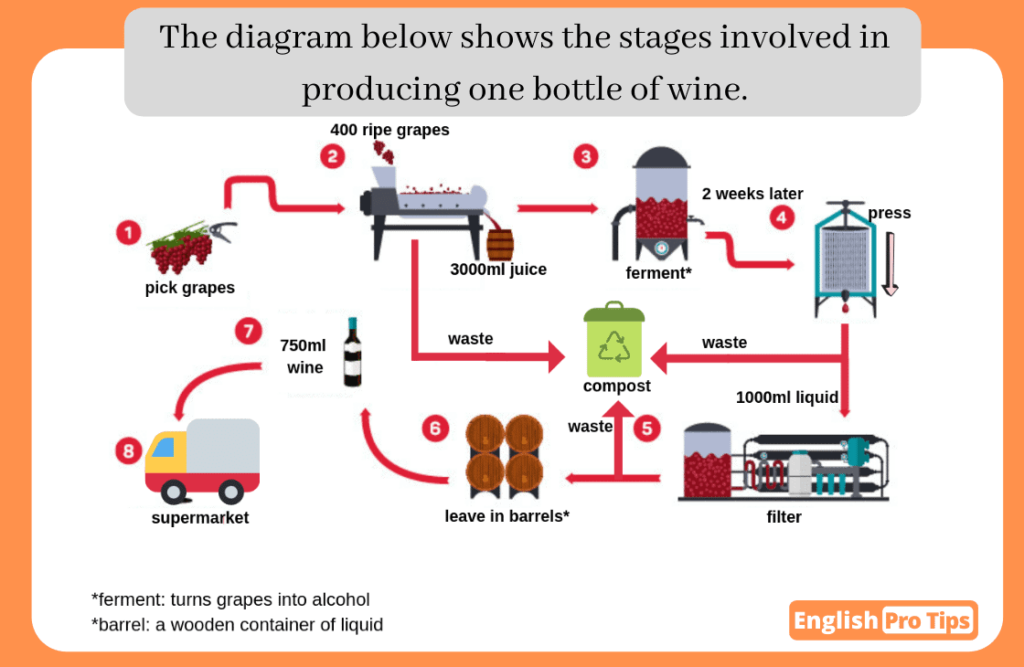Examiner Comments
- The report provides a clear and complete description of the ethanol production cycle, accurately outlining all seven stages from plant growth to the reabsorption of carbon dioxide.
- The introduction paraphrases the task effectively, while the two-sentence overview clearly identifies the cyclical nature of the process and the relationship between natural and industrial stages.
- Each key stage is described in order, including the chemical treatment of cellulose, microbial conversion to ethanol, and fuel use in transport.
- No information is omitted or assumed, and the explanation remains fully based on the diagram throughout.
- The report is well organised, with a logical sequence that mirrors the flow of the diagram.
- Linking expressions such as “At the outset,” “After this,” “Once,” and “In the final phase” ensure smooth progression from one stage to the next.
- Paragraphing is clear, and the description moves naturally from general overview to specific detail.
- Vocabulary is precise and scientifically appropriate, with effective use of terms such as “chemical treatment,” “biological reaction,” and “combustion.”
- The writer avoids repetition through varied wording like “raw material,” “resulting fuel,” and “ongoing production loop.”
- The tone remains formal and objective, consistent with academic writing conventions.
- A wide range of grammatical structures is used accurately, including the passive voice where appropriate (e.g. “are gathered,” “is reduced,” “is taken in”).
- Tense use is consistent, with the present simple applied throughout to describe a fixed, repeatable process.
- Complex sentences are controlled and fluent, giving the report a polished and professional quality.
Useful Vocabulary
A set of things arranged in a particular order.
The diagram shows the sequence of steps involved in producing ethanol fuel from plants.
Clearly separate or different.
Overall, the procedure includes seven distinct stages, beginning with the growth of vegetation and ending when carbon dioxide released from fuel use returns to the atmosphere, where it supports new plant growth.
Happening without stopping.
The process operates as a continuous natural and industrial cycle.
At the very beginning.
At the outset, plants grow by absorbing sunlight and carbon dioxide.
Happening at the start.
After this, they are gathered with agricultural machinery and sent to a facility for initial preparation, where the raw material is reduced to cellulose.
Experiences or goes through a process.
The cellulose then undergoes a chemical treatment that breaks it down into sugars.
Produced or created as a consequence.
The resulting fuel is then supplied to the transport sector, powering vehicles such as cars, lorries, and aircraft.
One stage or step in a process.
In the final phase of the cycle, the combustion of this fuel emits carbon dioxide, which is again taken in by growing plants, thereby sustaining the ongoing production loop.
Releases or sends out (especially gas or light).
In the final phase of the cycle, the combustion of this fuel emits carbon dioxide, which is again taken in by growing plants, thereby sustaining the ongoing production loop.
A cycle that repeats itself.
In the final phase of the cycle, the combustion of this fuel emits carbon dioxide, which is again taken in by growing plants, thereby sustaining the ongoing production loop.



